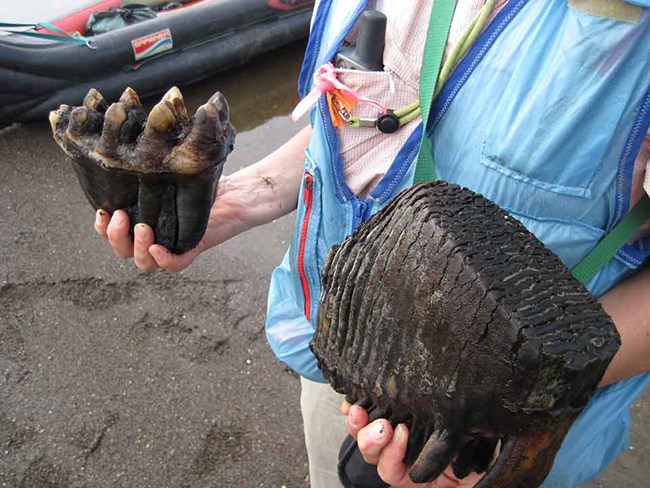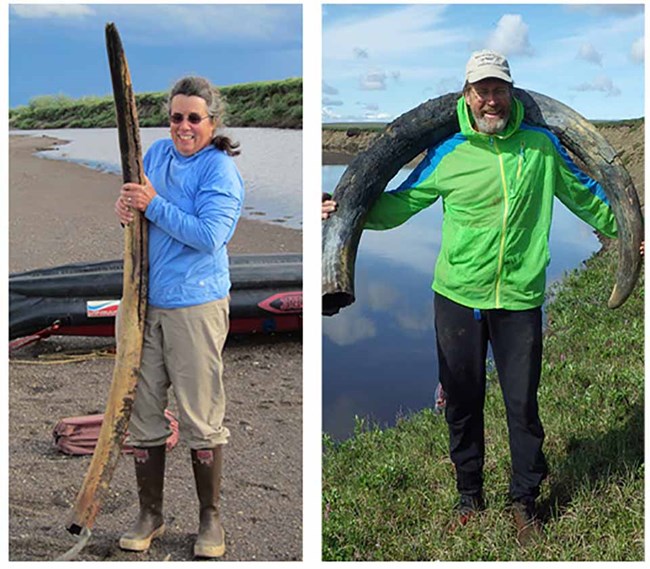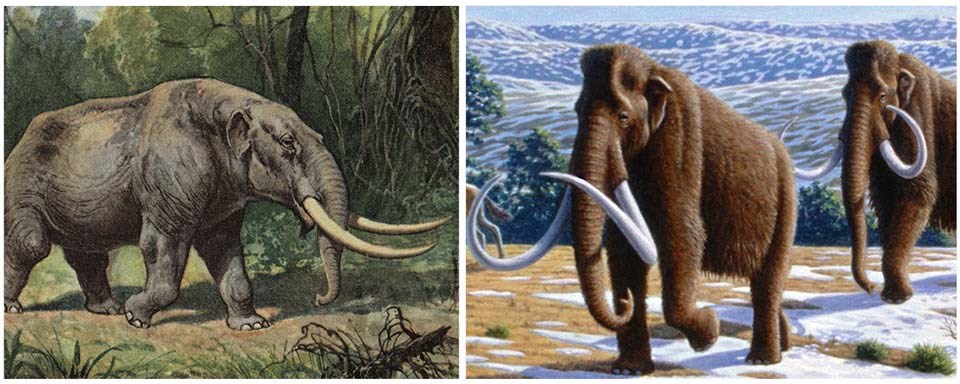Last updated: June 7, 2018
Article
Mastodon or Mammoth?

Photo courtesy of Daniel Mann.
Despite the superficial resemblance, mastodons were distinct from mammoths. Mastodon were shorter and stockier than mammoths with shorter, straighter tusks. Mastodons were wood browsers and their molars have pointed cones specially adapted for eating woody browse. Mammoths were grazers, their molars have flat surfaces for eating grass.

Recent evidence suggests that mastodon inhabited Beringia during a previous warmer episode, or interglacial, when there were trees or shrubs, probably >75,000 years ago along with Jefferson’s giant ground sloth (Megalonyx jeffersonii), giant beaver (Castoroides ohioensis), western camel (Camelops hesternus), and even a peccary (Platygonus compressus), another species adapted to warmer woodland environments (Zazula et al. 2014).
Mastodons and woolly mammoths overlapped in Beringia during the early to mid-Pleistocene with mastodons thriving in the warmer interglacial periods and mammoth favoring the colder glacial epochs. Mammoths survived in eastern Beringia until about 13,000 years ago (Guthrie 2006), while the very last mammoths in Alaska appear to have survived on the Pribilof Islands until about 6,000 to 8,000 years ago (Guthrie 2004, Veltre et al. 2008). The very last woolly mammoths lived in northern Siberia on Wrangel Island until about 4,000 years ago (Vartanyan et al. 2008)!

References
Guthrie, R. D. 2006.
New carbon dates link climatic change with human colonization and Pleistocene extinctions. Nature 441: 207-209.
Guthrie, R. D. 2004.
Radiocarbon evidence of mid-Holocene mammoths stranded on an Alaskan Bering Sea island. Nature 429: 746-749.
Vartanyan, S. L., K. A. Arslanov, J. A. Karhu, G. Possnert, and L. D. Sulerzhitsky. 2008.
Collection of radiocarbon dates on the mammoths (Mammuthus primigenius) and other genera of Wrangel Island, northeast Siberia, Russia. Quaternary Research 70: 51-59.
Veltre, D. W., D. R. Yesner, K. J. Crossen, R. W. Graham, and J. B. Coltrain. 2008.
Patterns of faunal extinction and paleoclimatic change from mid-Holocene mammoth and polar bear remains, Pribilof Islands, Alaska. Quaternary Research 70: 40-50.
Zazula, G. D., R. D. E. MacPhee, J. Z.Metcalfe, A. V. Reyes, F. Brock, P. S. Druckenmiller, P.Groves, C. R. Harington, G. W. L. Hodgins, M. L., Kunz, F. J. Longstaffe, D. H. Mann, H. G. McDonald, S. Nalawade-Chavan, and J. R. Southon. 2014.
American mastodon extirpation in the Arctic and Subarctic predates human colonization and terminal Pleistocene climate change. Proc Natl Acad Sci USA 111: 18460-18465.
